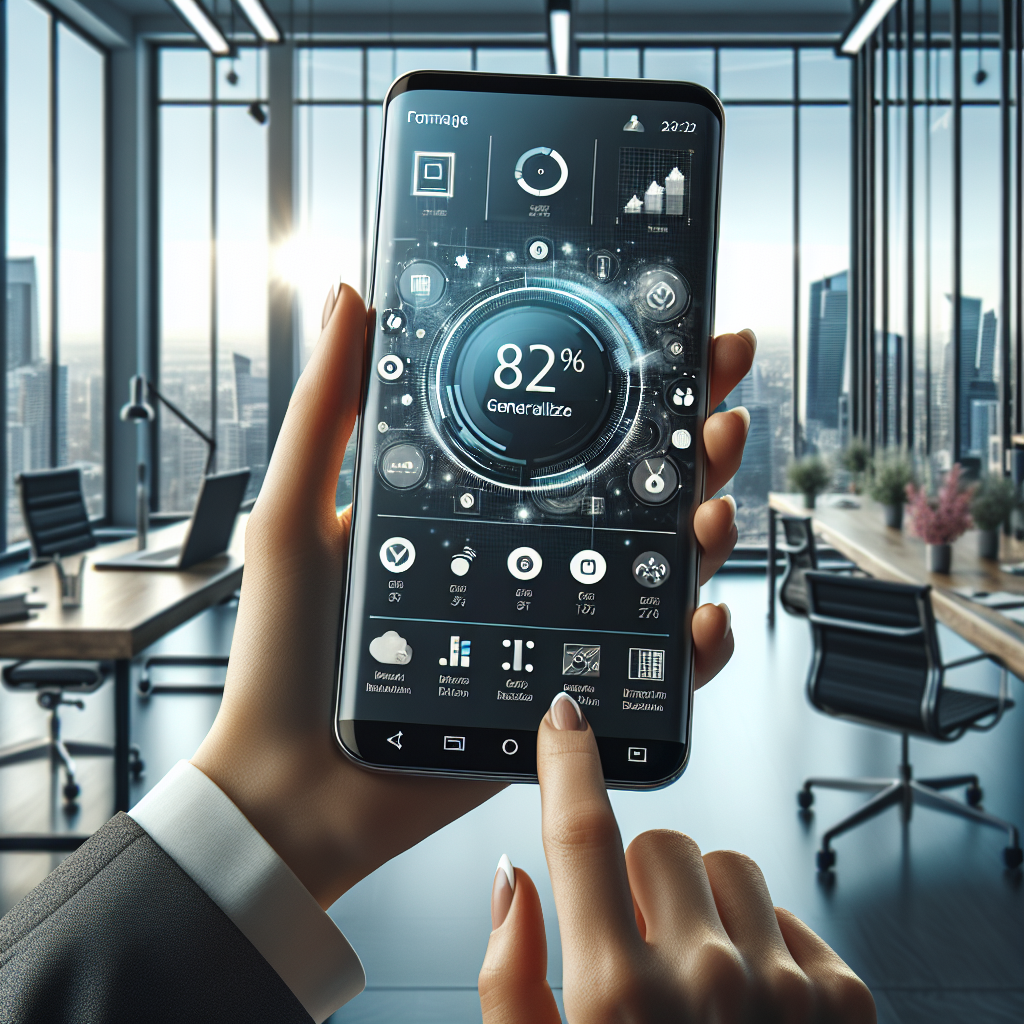Top User Acquisition Strategies to Grow Your Business
In today’s competitive digital landscape, effectively acquiring users is crucial for the growth and sustainability of any business. *User acquisition strategies* are the methods and tactics employed to attract new customers to your product or service. These strategies are vital as they not only help in expanding your user base but also play a significant role in increasing brand awareness and driving revenue.
Understanding the importance of user acquisition is the first step towards creating a successful business model. The primary goal is to identify and implement strategies that will bring in high-quality users who are likely to engage with your app or service in the long term. This involves a mix of paid and organic methods, each tailored to fit your unique business needs and market conditions.
Some of the most common user acquisition strategies include *search engine optimization (SEO)*, social media marketing, content marketing, and paid advertising campaigns. These strategies are designed to target potential users at different stages of their journey, ensuring a comprehensive approach to user acquisition.
For businesses looking to scale and succeed, it is essential to invest in robust user acquisition strategies. Whether you are a startup or an established company, understanding and leveraging these methods can make a significant difference in your growth trajectory.
Ready to take your user acquisition to the next level? Get a free quote from NS804 today and start growing your business with expert mobile app development services.
Understanding Your Target Audience

To effectively implement user acquisition strategies, a deep understanding of your target audience is imperative. Identifying who your potential users are, what they need, and how they behave provides a solid foundation for any marketing effort. The more you know about your audience, the better you can tailor your strategies to attract and retain them.
Start by creating *buyer personas*, which are detailed profiles of your ideal customers. These personas should include demographic information such as age, gender, location, and income level, as well as psychographic details like interests, values, and pain points. This comprehensive view helps you create personalized marketing messages that resonate with your audience.
In addition to creating buyer personas, leverage data analytics tools to gain insights into your audience’s behavior. Tools like Google Analytics, social media analytics, and CRM systems can provide valuable information about how users interact with your content and products. Understanding metrics such as *bounce rates*, *conversion rates*, and *user engagement* can help you fine-tune your strategies for better results.
It’s also essential to stay updated with market trends and competitor analysis. Keeping an eye on what your competitors are doing and how the market is evolving allows you to adapt your strategies accordingly. Conducting surveys, focus groups, and interviews can also provide direct feedback from your target audience, giving you a clearer picture of their needs and preferences.
By thoroughly understanding your target audience, you can create more effective and targeted user acquisition strategies that not only attract but also engage and retain users. This foundational step is key to ensuring long-term success for your business.
Leveraging Social Media Marketing

In today’s digital age, social media marketing has become an essential component of effective user acquisition strategies. Platforms like Facebook, Instagram, Twitter, LinkedIn, and TikTok offer unprecedented opportunities to reach and engage with your target audience. By leveraging social media marketing, businesses can create brand awareness, drive traffic, and ultimately convert followers into loyal customers.
One of the key aspects of social media marketing is content creation. It’s important to produce *high-quality, engaging content* that resonates with your audience. This could include blog posts, videos, infographics, and user-generated content. Consistency is crucial; regularly posting fresh content keeps your audience engaged and encourages them to interact with your brand.
Another powerful tool within social media marketing is *paid advertising*. Social media platforms offer highly targeted advertising options that allow you to reach specific demographics based on factors like age, location, interests, and behaviors. Running targeted ad campaigns can significantly boost your visibility and attract new users who are likely to be interested in your products or services.
Engagement is also a critical factor in social media marketing. Actively interacting with your audience through comments, messages, and live sessions can build a strong community around your brand. Responding to questions and feedback shows that you value your customers, fostering a sense of loyalty and trust.
Additionally, consider partnering with *influencers* who align with your brand values. Influencer marketing can expand your reach to a broader audience and add credibility to your brand. Influencers can create authentic content that resonates with their followers and drives them towards your products or services.
By strategically leveraging social media marketing, businesses can effectively attract and retain users, enhancing their overall user acquisition efforts. Social media provides a dynamic and interactive platform to connect with your audience, making it an indispensable tool in your marketing arsenal.
Utilizing Content Marketing Strategies
Content marketing is a cornerstone of effective user acquisition strategies, offering a means to attract, engage, and retain users by providing valuable and relevant content. Unlike traditional advertising, content marketing focuses on delivering *informative, educational, and entertaining content* that meets the needs and interests of your target audience.
One of the primary forms of content marketing is blogging. Regularly publishing blog posts on your website can help you establish authority in your industry and improve your search engine rankings. High-quality blog content that addresses common questions, provides solutions, and offers insights can attract organic traffic and convert visitors into potential customers.
Another powerful content marketing strategy is the creation of *eBooks, whitepapers, and case studies*. These long-form content pieces can be used to delve deeper into specific topics, offering more detailed information and showcasing your expertise. They can also serve as lead magnets, encouraging users to provide their contact information in exchange for access to the content.
Video content is also a highly effective tool in content marketing. Videos can capture attention quickly and convey complex information in an easily digestible format. Whether it’s tutorials, product demonstrations, or behind-the-scenes looks at your company, video content can engage users and keep them coming back for more.
Podcasts have gained popularity as well, offering a platform to discuss industry trends, share stories, and provide valuable insights. Hosting a podcast or appearing as a guest on existing ones can help you reach a wider audience and build a loyal following.
Infographics are another excellent content marketing tool. They present information in a visually appealing and easily understandable format, making complex data more accessible. Infographics are highly shareable, increasing the likelihood that your content will reach a broader audience.
Finally, user-generated content can be incredibly valuable. Encouraging your audience to share their experiences, reviews, and testimonials not only provides you with fresh content but also builds trust and authenticity around your brand.
By utilizing a variety of content marketing strategies, businesses can create a robust and engaging user acquisition pipeline. The key is to consistently produce high-quality content that resonates with your audience, fostering a strong connection and encouraging long-term loyalty.
Implementing Paid Advertising Campaigns

When it comes to *user acquisition strategies*, implementing paid advertising campaigns can deliver swift and measurable results. Paid advertising allows businesses to target specific audiences, ensuring that their message reaches the right people at the right time.
One of the most popular forms of paid advertising is **Pay-Per-Click (PPC)**. Platforms like Google Ads enable businesses to display ads in search engine results for specific keywords. This ensures that your ads appear when potential customers are actively searching for products or services related to your business. The cost-efficiency of PPC campaigns is enhanced by the fact that you only pay when someone clicks on your ad.
**Social media advertising** is another highly effective strategy. Platforms such as Facebook, Instagram, LinkedIn, and Twitter offer robust advertising tools that allow for precise targeting based on demographics, interests, and behaviors. These platforms also provide various ad formats, including image ads, video ads, carousel ads, and sponsored posts, allowing you to choose the format that best suits your campaign goals.
**Display advertising** involves placing banner ads on relevant websites across the internet. Using networks like Google Display Network, businesses can reach a vast audience while targeting users based on their browsing history, interests, and other criteria. Display ads are particularly useful for brand awareness and retargeting campaigns, where you can remind users of your products or services after they have visited your site.
**Mobile advertising** is crucial in today’s smartphone-dominated world. With more users accessing the internet via mobile devices, placing ads within mobile apps and websites can significantly increase your reach. Mobile ads can take various forms, such as in-app ads, mobile search ads, and SMS marketing.
For those looking to drive app downloads specifically, **App Store Advertising** on platforms like Apple’s App Store and Google Play Store can be incredibly effective. These ads appear directly in the app store search results, making it easier for users to discover and download your app.
Finally, **influencer marketing** can be a powerful addition to your paid advertising mix. Partnering with influencers who have a significant following in your industry can help you reach a broader audience. Influencers can create sponsored content that promotes your products or services in an authentic and relatable manner.
By carefully planning and executing paid advertising campaigns, businesses can achieve rapid user acquisition and reach their target audiences more effectively. The key is to continually monitor and optimize your campaigns to ensure maximum ROI and to stay ahead of the competition.
Optimizing App Store Presence

**Optimizing your app store presence** is a crucial aspect of effective *user acquisition strategies*. A well-optimized app store listing can significantly increase your app’s visibility, drive more downloads, and ultimately contribute to your app’s success.
One of the first steps in app store optimization (ASO) is to focus on your **app name and title**. Your app’s name should be unique, memorable, and relevant to its functionality. Including relevant keywords in your title can enhance your app’s discoverability, as the app store algorithms take these keywords into account when ranking apps.
**Keyword optimization** is another vital element. Conduct thorough keyword research to identify the terms and phrases your potential users are likely to search for. Incorporate these keywords naturally into your app’s title, description, and metadata. However, avoid keyword stuffing, as this can negatively impact your app’s ranking.
**App descriptions** play a pivotal role in convincing users to download your app. The description should clearly and concisely convey what your app does, its unique features, and the benefits it offers. Use bullet points to break down the information for easy readability and include a call-to-action to encourage users to download the app.
High-quality **app screenshots and videos** are essential visual elements that can significantly influence a user’s decision to download your app. Ensure that your screenshots highlight the key features and functionalities of your app. A well-crafted promotional video can provide a quick, engaging overview of what users can expect, further enticing them to hit the download button.
**User reviews and ratings** are powerful social proof that can impact your app’s credibility and attractiveness. Encourage satisfied users to leave positive reviews and high ratings. Regularly monitor and respond to reviews to show that you value user feedback and are committed to improving the app.
**Regular updates** are necessary to keep your app relevant and functional. Update your app to fix bugs, introduce new features, and improve performance. Each update is an opportunity to improve your app’s ranking and show users that the app is actively maintained.
Lastly, consider leveraging **localization** to reach a global audience. Translate your app’s content into multiple languages and adapt it to different cultures to make it appealing to users worldwide.
By implementing these ASO techniques, you can enhance your app’s visibility, attract more users, and maintain a competitive edge in the crowded app marketplace. Ready to take your app to the next level? Get a free quote from NS804 today and start optimizing your app store presence for maximum impact.
































